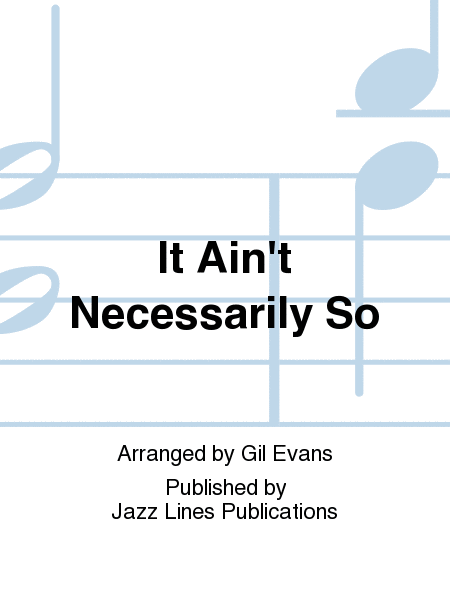It Ain't Necessarily So
As Recorded by Miles Davis and Gil Evans on 1958's Porgy and Bess
Details
Description
SKU: JL.JLP-7556S
As Recorded by Miles Davis and Gil Evans on 1958's Porgy and Bess. Edited by Dylan Canterbury, Rob DuBoff, and Jeffrey Sultanof. Arranged by Gil Evans. Range: Trumpet 1: E6; Trombone 1: C5. Swing. Score. Published by Jazz Lines Publications (JL.JLP-7556S).One of the most frequently covered songs from George and Ira Gershwin's opera 'Porgy and Bess,' 'It Ain't Necessarily So' is intended to serve as a defining moment for the character of Sportin' Life, a drug dealer who has his eyes set on seducing Bess. A hedonist through and through, Sportin' Life offers up his cynical views of the Bible to the largely religious community of Catfish Row, earning him a mix of interest and scorn from the other characters. The arrangement begins with a somewhat painstaking statement from the solo trumpet, with some soft ensemble backgrounds that gradually build to a powerful hit that establishes the medium swing feel that the rest of the arrangement adheres to at measure 10. The trumpet soloist briefly improvises before stating the pithy melody at measure 18. The full ensemble re-enters at measure 26 to provide accompaniment for another improvisation from the solo trumpet before the melody returns for the final A section at measure 34. Beginning at measure 42, the rest of the arrangement serves largely as a vehicle for an improvised trumpet solo. Most of the accompanying backgrounds are handled by brief rhythmic hits in the horns, but the rest of the ensemble enters to help out on the bridge at measure 58. Interestingly enough, the melody on the bridge is not stated until measure 90, when the full ensemble comes in at full strength at measure 90. The trumpet soloist resumes the melody at measure 98, with another extended improvised solo that gradually fades out until the end of the arrangement.

 Share
Share